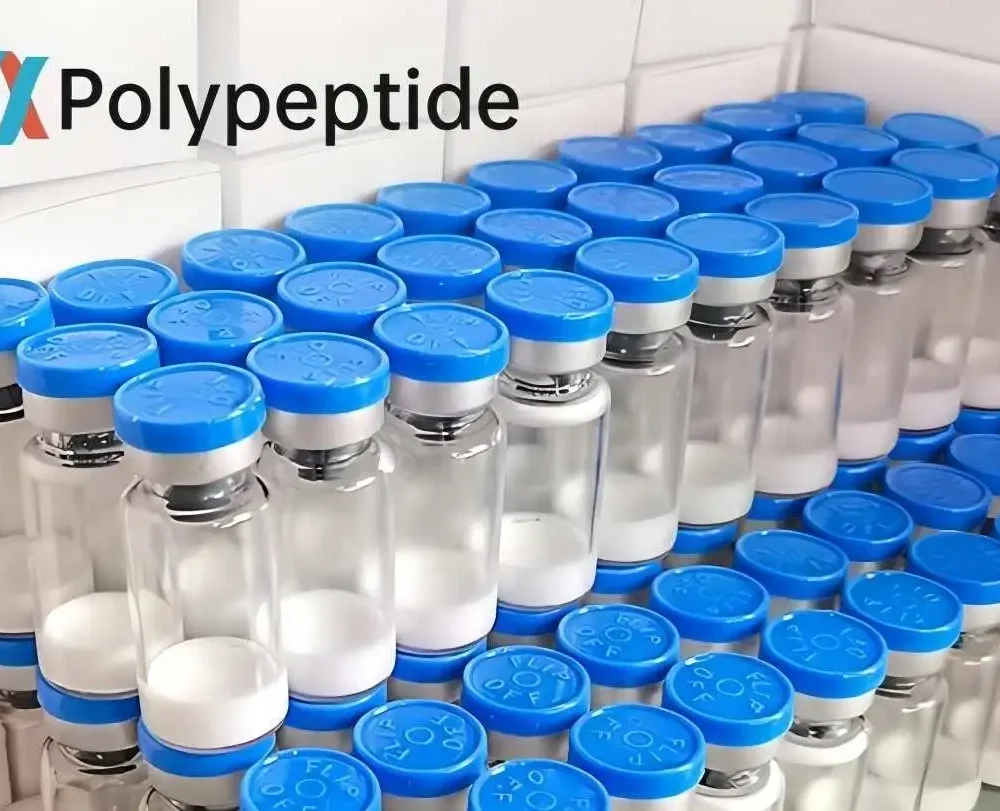
As the demand for effective treatments for metabolic disorders and obesity rises, innovative medications such as Tirzepatide and Retatrutide have garnered significant attention. These groundbreaking products, manufactured by PHCOKER under stringent GMP (Good Manufacturing Practice) standards, promise substantial benefits for patients. In this article, we delve into the specifics of these medications, exploring their benefits, dosages, uses, and the latest research surrounding them.
Tirzepatide
Tirzepatide, developed by PHCOKER, represents a significant advancement in treating type 2 diabetes and obesity. This medication is a dual agonist of the glucose-dependent insulinotropic polypeptide (GIP) and the glucagon-like peptide-1 (GLP-1) receptors, targeting multiple pathways involved in metabolic regulation. By harnessing these dual actions, Tirzepatide offers a comprehensive approach to managing both insulin resistance and excess weight, addressing key aspects of metabolic syndrome.
Benefits of Tirzepatide
#1. Improved Glycemic Control
Tirzepatide has demonstrated robust efficacy in improving glycemic control among patients with type 2 diabetes. By stimulating the GLP-1 receptor, it enhances glucose-dependent insulin secretion and suppresses glucagon release, thereby lowering blood glucose levels. This mechanism not only reduces HbA1c levels but also helps maintain stable blood sugar throughout the day, promoting better long-term management of diabetes.
#2. Weight Loss
A notable benefit of Tirzepatide is its ability to induce significant weight loss in patients, which is particularly crucial in managing obesity. The dual GIP and GLP-1 receptor activation not only reduces appetite but also promotes satiety, leading to decreased caloric intake and enhanced fat metabolism. This dual action makes Tirzepatide a promising option for individuals struggling with both diabetes and obesity, offering a synergistic approach to improving overall metabolic health.
#3. Cardiovascular Benefits
Beyond its effects on glucose and weight, Tirzepatide shows promising cardiovascular benefits. Clinical trials have indicated reductions in blood pressure and improved lipid profile among patients using Tirzepatide. These findings suggest potential cardiovascular protective effects, which are critical for reducing the risk of heart disease, a common complication in individuals with type 2 diabetes and obesity.
Dosage and Administration
Tirzepatide is administered via subcutaneous injection once weekly. The dosage typically starts at 5 mg and can be increased based on the patient’s response and tolerability, up to a maximum of 15 mg per week.
Uses
- Type 2 Diabetes: Tirzepatide injection is primarily used to improve glycemic control in adults with type 2 diabetes.
- Obesity: The medication is also prescribed for weight management in obese patients, contributing to significant weight reduction.
Tirzepatide from PHCOKER emerges as a potent therapeutic option for managing type 2 diabetes and obesity. Its dual GIP and GLP-1 receptor agonism offers multifaceted benefits including improved glycemic control, substantial weight loss, and potential cardiovascular protection. As research continues to validate its efficacy and safety profile, Tirzepatide stands poised to make a significant impact in improving outcomes for patients with metabolic disorders.
Latest Research
Recent studies have highlighted the efficacy of Tirzepatide in dual GIP and GLP-1 receptor agonism, offering a novel approach to managing type 2 diabetes and obesity. Ongoing research explores its long-term cardiovascular benefits and potential applications in other metabolic disorders.
Retatrutide
Retatrutide, developed by PHCOKER, represents a groundbreaking advancement in pharmaceutical innovation as a triple receptor agonist targeting the GLP-1, GIP, and glucagon receptors.
This unique mechanism of action allows Retatrutide to exert comprehensive effects on metabolic pathways, making it a versatile medication for addressing obesity and related metabolic disorders. The Retatrutide dosage 10mg represents a critical stage in its therapeutic regimen, offering substantial benefits in weight management and metabolic health
Benefits
#1. Enhanced Weight Loss
Retatrutide stands out for its remarkable efficacy in promoting weight loss. By simultaneously activating multiple receptors involved in metabolic regulation, including GLP-1, GIP, and glucagon receptors, Retatrutide enhances satiety, reduces appetite, and increases energy expenditure. These combined actions lead to substantial weight loss, making it a potent tool for individuals struggling with obesity.
#2. Improved Metabolic Health
Beyond weight loss, Retatrutide positively influences various metabolic parameters critical for overall health. It improves glucose metabolism by enhancing insulin sensitivity and reducing hepatic glucose output. Moreover, it contributes to favorable changes in lipid profiles, lowering triglycerides and LDL cholesterol while increasing HDL cholesterol levels. These metabolic improvements are pivotal in managing conditions like insulin resistance and metabolic syndrome.
#3. Versatile Use
Retatrutide’s broad receptor agonism opens doors to diverse therapeutic applications beyond obesity. Research indicates its potential efficacy in managing non-alcoholic steatohepatitis (NASH), a liver condition often associated with metabolic syndrome. Additionally, its impact on glucose and lipid metabolism suggests potential benefits in treating other metabolic disorders, extending its utility across a spectrum of health conditions.
Dosage and Administration
Retatrutide is administered as a subcutaneous injection once weekly. Dosage initiation typically starts at 2.5 mg, with gradual increments up to a maximum of 10 mg, depending on patient response and tolerance.
Uses
- Obesity: Retatrutide is mainly used for weight management, helping patients achieve significant weight reduction.
- Metabolic Health: It also improves various metabolic health markers, making it beneficial for patients with metabolic syndrome or related conditions.
Retatrutide from PHCOKER emerges as a revolutionary medication with a triple receptor agonist mechanism targeting GLP-1, GIP, and glucagon receptors. Its ability to enhance weight loss, improve metabolic parameters, and potentially address conditions like NASH underscores its significance in modern healthcare. As further research continues to validate its efficacy and safety, Retatrutide holds promise in transforming the management of obesity and related metabolic disorders, offering new hope for patients seeking effective treatment options.
Latest Research
Recent clinical trials have demonstrated the efficacy of Retatrutide in promoting weight loss and improving metabolic health. Research is ongoing to explore its full potential in treating NASH and other metabolic disorders.
Comparison Between Tirzepatide and Retatrutide
| Feature | Tirzepatide | Retatrutide |
| Primary Use | Type 2 Diabetes, Obesity | Weight Management, Metabolic Health |
| Dosage Form | Subcutaneous Injection | Subcutaneous Injection |
| Frequency of Use | Weekly | Weekly |
| Mechanism of Action | Dual GIP and GLP-1 Receptor Agonist | Triple Receptor Agonist |
| Weight Loss Efficacy | High | Very High |
| Glycemic Control | Excellent | Moderate |
PHCOKER: A GMP Manufacturer
PHCOKER stands out as a leading manufacturer of high-quality pharmaceutical products, adhering to stringent GMP standards. Their commitment to excellence ensures that medications like Tirzepatide and Retatrutide meet the highest safety and efficacy standards. PHCOKER’s state-of-the-art facilities and rigorous quality control processes underscore its dedication to advancing healthcare through innovative solutions.
Conclusion
Tirzepatide and Retatrutide, manufactured by PHCOKER, represent significant advancements in the treatment of type 2 diabetes, obesity, and metabolic health. Their unique mechanisms of action, substantial benefits, and rigorous manufacturing standards position them as crucial tools in modern medical practice. As research continues to evolve, these medications will likely play an increasingly vital role in managing metabolic disorders and improving patient outcomes.

Beth is Cloudmineinc’s senior health editor and a certified personal trainer. She has over 10 years experience as a science journalist and is the author of two books. She deadlifts over 315 lbs.